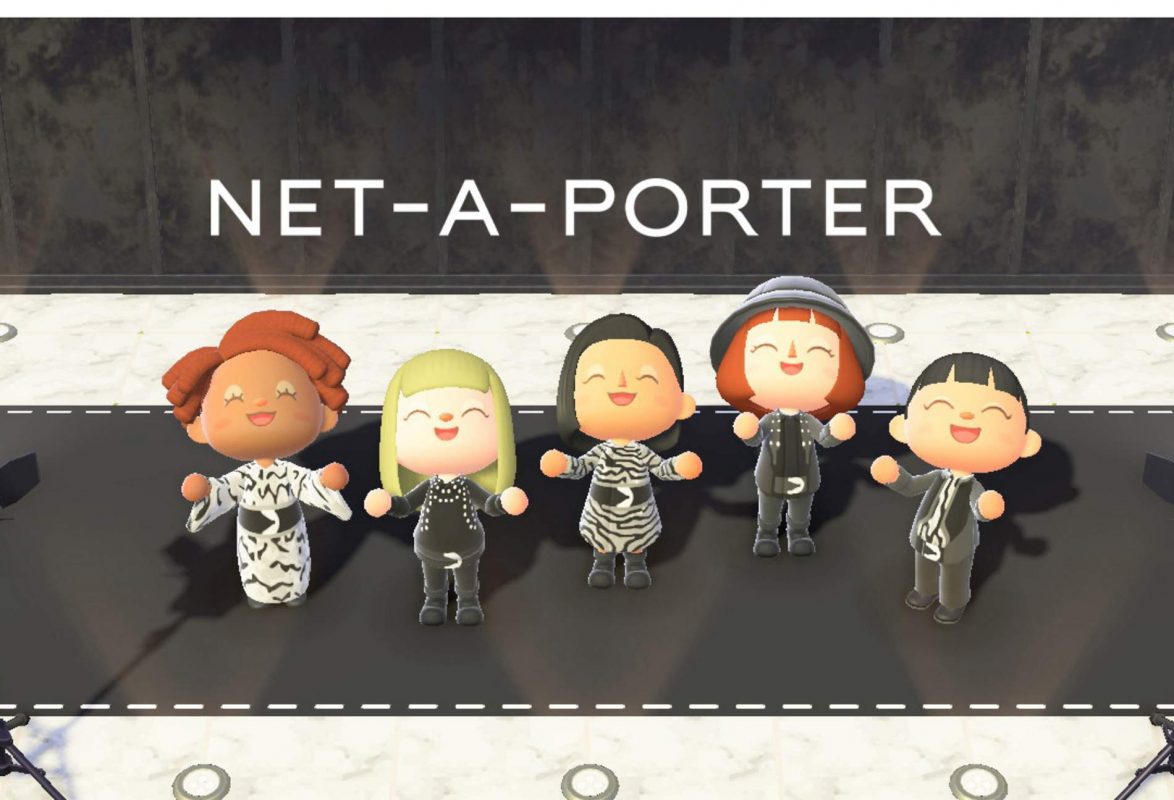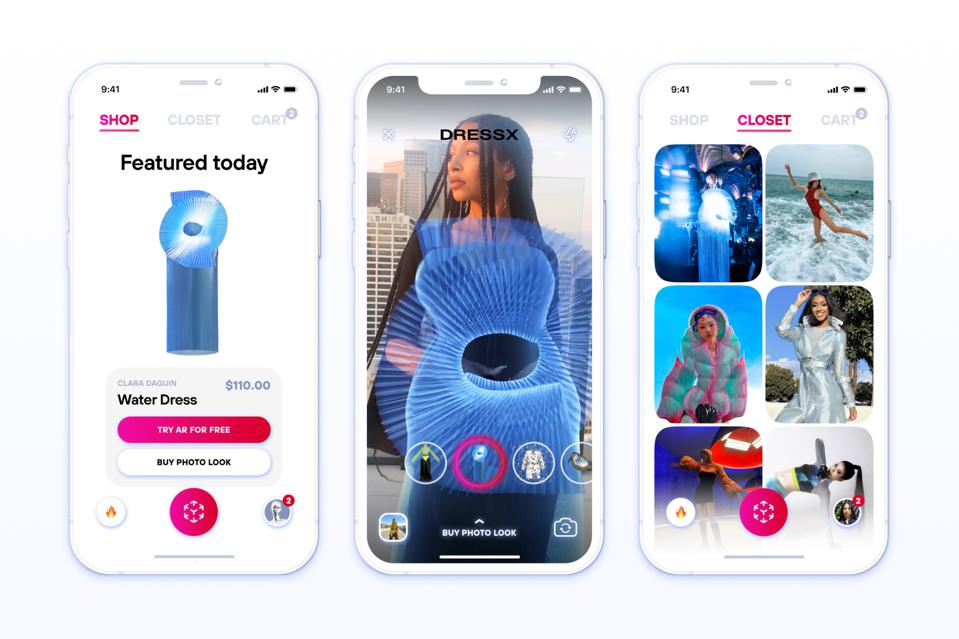A market shift towards digital solutions during this period of widespread quarantine is sparking questions over sustainability in the face of a post-pandemic fashion industry.

COVID’s effect on the industry in 2020 rendered live fashion presentations almost impossible. Since, digital fashion’s presence and influence have grown – and companies are closely examining the ways that the industry functions during a pandemic.
Fast Fashion’s Footprint
So what does a changing industry mean for the future of fashion? Well, for one, we are witnessing the speedy rise of fast fashion. Fast fashion brands generate 52 micro-seasons every year, about one new collection per week. Social media is also extending fashion’s outreach.
Fast fashion’s carbon footprint even rivals that of sectors like air travel and oil. Its characteristics combine in a spectacular fashion – and its impacting both the environment and the individuals who work in the garment industry. Toxic chemicals, hazardous colours and synthetic materials used by fast brands like Boohoo, seep into water systems. Trend replication, quick manufacturing, bad quality, and low prices have created an unstoppable force.
Stacking Up
The traditional practices of the fashion industry have long been regarded as outdated. More importantly, it’s wasteful, with discarded stockgoods piling up in landfills around the world. In a 2020 research project, carbon emissions from buyers and designers travelling to the four major fashion weeks were measured (New York, London, Paris, and Milan).
Total CO2e emissions were estimated to be at 241,000 tonnes, equivalent to 51,000 cars on the road or 3,060 years of lighting the Eiffel Tower. This is on top of the 100 international fashion weeks that take place throughout the world.

Fashion without flights, overproduction, or waste clothing might sound appealing, but the ICT industry (which feeds digital fashion) is a significant source of glasshouse gas (GHG) emissions.
According to the United Nations, data centres used to power digital services accounted for around 2% of global GHG emissions in 2016. To put that into perspective, that’s a percentile almost equivalent to the aviation industry. Because we can not see smells, chemical run-off, or piles of textile waste, most of us feel that digital naturally equals sustainable, but it’s important that the industry think critically about its expressions going forward.
11 million tonnes of clothes are discarded each year in the United States alone. These clothes, which are full of lead, insecticides, and a slew of other toxins are almost impossible to degrade. Instead, they end up in landfills, releasing poisonous gases into the atmosphere.
Sparking Experimentation
HFW’s (Helsinki Fashion Week’s) presentation in 2020 includes an innovative effort towards digitisation.
The “cyberspace utopia” platform Digital Village hosted for Helsinki Fashion Week includes digital presentations, a pre-ordering function, and real clothing available to be worn in client photos or virtual surroundings.
Despite the fact that the pandemic has prompted rapid innovation, the industry seems to be failing to meet expectations. Tight deadlines are producing lacklustre digital exhibits. Emerging technologies have also split the industry. There are those who wish to embrace new forms of technological freedom and those who are resistant to change. Will the adopters of digital fashion be ahead once the pandemic subsides? Grégoire Willerval of Scotomalab, the studio which created the digital looks for HFW, thinks so.
“It saves time, and it makes it possible to consume less materials, not to overproduce clothes and not to transport all of this all over the world. It’s a big step for the fashion industry.”
Source: Dazed
Consumer Spending

The worldwide closure of retail establishments has not only cut consumer spending. It’s also raising questions regarding non-essential shopping during times of inaccessibility. Caroline Rush CBE, Chief Executive of the British Fashion Council tells Dazed,
“In that sense, the global pandemic has been a wake-up call for the industry and I genuinely hope that the long-term effect is change for good.”
With the popularisation of app-shopping, consumers can peruse collections in more personal settings. This can occur during all hours of the day. Brands can fill our feeds with products, either via their own channels or by way of influencers.
Computerised Manifestations
Limited Contact
The shift towards virtual fashion during the pandemic is pervasive. Real contact between designers and manufacturers is extremely sparse. It-girls and audiences of former fashion weeks have all- but-disappeared from the pages of magazines. What will the fashion business even look like when we get back on our feet? Well, for one, we are seeing the rising popularity of purely digital fashion.

“We’re doing that because that’s what the technology allows right now,” he says. “But in four years we imagine that everyone will walk around with AR glasses on; you will have the digital world imposed on reality for millions of people constantly. So, then you’re walking down the street in a black hoodie and some black jeans, but then you’ve bought a digital fashion garment, and every single person that walks past you wearing AR glasses is gonna see you wearing that garment, in real life, in real time.”
The Impact of Digital Design

The conversation is often drawn to digital and virtual fashion amidst the crisis. Kerry Murphy is the founder of The Fabricant; a design business that creates purely digital apparel. The current scenario, according to Murphy, demonstrates how vulnerable the sector (and our financial system) is. Murphy expresses to Forbes that,
“brands are already looking for radical ways of redefining their culture and operations to a more digital mindset.”
The way digital clothing is bought and sold is an issue that is often forgotten. Some are minted as NFTs and recorded on the blockchain. Some are paid for like any other e-commerce garment (resulting in a photo of yourself wearing the digital garment). The purchase is essentially verified and traceable over the internet.
NFTs are frequently recorded on Ethereum, a blockchain-based platform that also has its own form of currency. It uses a Proof-of-Work method, an energy-intensive process which is causing concerns amongst environmentalists. A single Ethereum transaction uses the same amount of energy as an ordinary US family for 4.38 days.
“This format will not completely replace physical clothing,” says Natalia Modenova, COO and co-founder of DRESSX. “But it will definitely exist in the industry, become an integral part, and take a certain market share. Digital fashion is an opportunity to redefine business models and build a more sustainable, progressive future.”
Source: Dazed
Subscribe to FIB’s Weekly Breaking News Report for your weekly dose of music, fashion and pop culture news!







